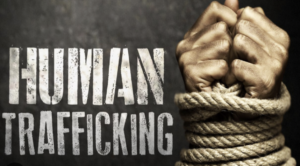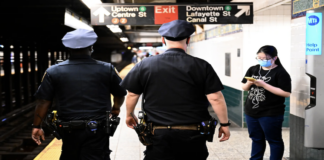Human trafficking thrives in the shadows near busy transportation hubs where thousands of travelers travel. The U.S. State Department estimates there are 28,000,000 victims despite efforts to bring this epidemic to light.
In 2009, a ray of hope appeared in the darkness in the form of Transportation Against Trafficking. This non-profit organization empowers the transportation industry in recognizing and reporting instances of human trafficking. TAT’s innovative methods and widespread outreach are transforming the fight to end human trafficking one transportation worker at a time.
TAT previously focused on truck drivers’ unique position to be vigilant for signs human trafficking. TAT has recently expanded its advocacy efforts to include the entire transportation industry. TAT’s advocacy includes but is not restricted to parts and equipment dealers, energy, shipping, logistics, public transportation, motorcoach and school transport providers.
Human trafficking doesn’t just happen at night. Infiltrating places like airports, truck stops and rest areas, it is hidden in plain view. Rescue is possible in these busy environments.
Throughout our lives, we develop the ability to recognize human behavioral patterns. The human mind is a remarkable observer of life, even if we don’t realize it. Pattern recognition has become so sophisticated that behaviors that fit a pattern are almost invisible.
When even the smallest details catch our attention, and break a habitual behavior pattern, we’ll consciously notice something that doesn’t seem right. This instinctive alarm is what prompts us to take a closer look.

TAT trains transportation workers on how to identify potential victims of human trafficking. Criminals move their victims around transit points to different locations, especially – but not necessarily – remote ones.
Laura Cyrus is the senior director for industry training and outreach, TAT.
Since 2009, TAT trained more than 1.7 million professionals in the industry on human trafficking. Drivers have made thousands of calls, which led to the recovery of victims, and the arrest of perpetrators. Professional transportation workers, who are often the first to see this crime because it’s hidden in plain view, can be critical for the safety and recovery of victims of human traficking.
TAT uses technology to train transportation workers on how to identify signs of human trafficking.
Zonar Systems is a Seattle-based provider that offers fleet safety and health solutions. It’s a great example of the synergy created between technology and transportation providers. Zonar’s eTAT app is designed for Electronic Logging Devices, which are federally mandated. It helps transportation workers to identify and report labor or sex slavery in their daily work. The app allows workers to view red flags for human trafficking, scan QR codes on their mobile devices, and access podcast episodes, training videos and more.
Jill Snyder, compliance director and safety director of Zonar Systems says:
It is important that truckers know the proactive steps to take in order to identify and report suspicious activities. Law enforcement and advocacy groups, from local governments to federal levels, are leading anti-trafficking initiatives.
Transportation Against Trafficking compiled a comprehensive list of behavioral red-flags that can be used to identify potential cases of trafficking. These indicators can range from frequent visits to certain establishments to people displaying signs such as distress or coercion.

The bathrooms in transport hubs, especially the women’s restrooms are often a place where victims can seek assistance. Although many victims are trained to suppress their emotions, to not ask for assistance, or to not talk to anyone, the human instincts and patterns recognition cannot be suppressed. We can sense when someone close to us is in distress. It’s a chance to make contact, and if the victim refuses, the citizen will still alert law enforcement.
Anyone can help fight human trafficking by being vigilant and observant. This is true regardless of your profession. Trafficking red flags also include:
- Not knowing where they are; not having control over their ID/passport
- Communication restricted or controlled; not allowed to speak; being observed or followed
- Mention of a quota, or having a pimp/daddy
- Signs of tattooing or branding of the trafficker’s names (often on neck).
- Dropping women off in an area dominated by men and then picking them up 20 minutes later.
- Signs of bruises
- When a truck pulls up to a truck parking space at a truck stop or rest area, multiple women (usually) will get out and start walking from truck-to-truck.
- People who seem to be ignorant of their environment or locality
Over a million people have been trained to be TAT advocates. The ripple effect of their efforts can be felt across continents and offers hope to those who are victims of exploitation. Jill Snyder who has 40 years experience in transportation and victim rescue adds: “These people are being forced, coerced, beaten, or drugged. These traffickers are heartless. They will do anything to make these people do what they want. We can all help stop them if we are vigilant.”










